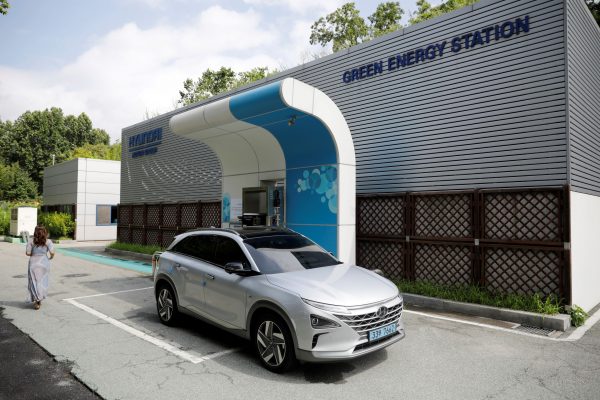South Korea was the second major East Asian nation to utilise catch-up strategies of technology leverage, after Japan. It built its first manufacturing industries in clothing and textiles, then moved on to simple electronics and white goods before tackling heavy and chemical industries in the 1970s, focused on the automotive sector. In the early 1990s, the roads were full of locally-made cars — Hyundais, Kias — a visible sign of a strong state at work in building and protecting a new industry.
The ‘Korean way’ was always about accelerated catch-up, driven by high levels of indebtedness. South Korea took bigger risks and went for bigger rewards. It was as scholar Jung En-woo called it, a ‘race to the swift’.
The transformation was evident in the career of Lee Byung-chull, founder of Samsung, who had been branded as a war profiteer during the Korean war but at his death was hailed as a national hero. He had taken Samsung from a simple sugar and food producer to an international giant in the most advanced aspects of semiconductor production at the core of the electronics and IT industries. He was also guiding Samsung to become an automotive company that would rival and perhaps outclass Hyundai, only to see these plans cut short by the 1997 Asian financial crisis.
Perhaps the most famous of South Korea’s big bets was to back the telco standard CDMA (Code Division Multiple Access), introduced as a 3G technology standard for mobile phones by the US firm Qualcomm. South Korea actively backed this as one of the first movers, inducing Samsung and others into the nascent market. This choice propelled the South Korean firms to become telco giants. South Korea used all available state resources to ensure that CDMA was adopted as a standard internationally, helping to launch the mobile tech revolution.
In the 21st century, the focus of South Korea’s developmental ambitions has shifted from promoting the fossil-fuel intensive industries of the past to the new, clean green industries of the future. Since the mid 2000s, successive South Korean governments — anxious about the economic, environmental and political costs of the country’s reliance on fossil fuels — have prioritised this shift.
South Korea’s continued developmental ambitions are clear in the Moon Jae-in administration’s set of strategies announced as part of the Digital New Deal, combined with a suite of policies labelled the Green New Deal. The Green New Deal exemplifies the trends of the East Asian clean energy transition. It contains anticipated strategies like the provision of improved green infrastructure and a swing towards renewables as the country seeks less dependency on fossil fuels.
But it is in building a new automotive sector based on electric vehicles, encompassing battery electric vehicles and hydrogen fuel cell electric vehicles, that South Korea’s ambition is most evident. The South Koreans are betting big on hydrogen fuel cell vehicles, where Hyundai already rivals Toyota as a world-leading producer and pioneer. The stakes are enormous, with Hyundai promising to become one of the world leaders in taking vehicles to the next level of green electrification.
The government aims to establish South Korea’s leadership — especially over China — in the technology-intensive, job-creating industries of the future. Economic dynamism, job creation and pollution control are essential to maintaining the government’s political legitimacy.
The Green New Deal’s energy component includes raising the level of renewable energies, building out the smart grid, promoting renewables and expanding the supply of electric and fuel cell electric vehicles (1.3 million electric and 200,000 fuel cell vehicles by 2025). These are ambitious targets that will represent heavy state intervention in the market.
Placing big bets and then using state resources to bring about the desired market shift is key to the Korean way. South Korea’s strategic approach to green growth is to focus on creative destruction — building the new while dismantling the old — as an industry strategy, not just as a pure play to reduce carbon emissions.
The result is the same — reducing carbon emissions. South Korea is building green industries with lower carbon emissions, but the emphasis in policy is all about the industrial transformation that drives it. This is an extension of the well-established developmental mindset, or developmental environmentalism, now applied to climate goals.
The Korean way to the green transition, viewed as the next great transformation of industrial capitalism, promises to give developing countries worldwide a chance to catch-up through developmental-environmental strategies. East Asia is moving to become the fulcrum of the next great industrial transformation.
Elizabeth Thurbon is a Scientia Fellow and Associate Professor of International Political Economy in the School of Social Sciences, UNSW Sydney, and an Australia-Korea Fellow at The Asia Society.
John A Mathews is a Professor Emeritus in the Macquarie Business School at Macquarie University.
A version of this article appears in the most recent edition of East Asia Forum Quarterly, ‘The Korean Way’, Vol 13, No 4.

